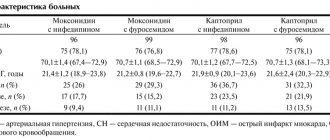Hypothiazid®
Non-melanoma skin cancer, lip cancer
Two epidemiological studies based on the Danish National Cancer Registries showed an increased risk of developing non-melanoma skin cancer and lip cancer (basal cell carcinoma of the skin and squamous cell carcinoma of the skin) with increasing cumulative dose of hydrochlorothiazide.
Hydrochlorothiazide has a photosensitizing effect, which may cause the development of non-melanoma skin and lip cancer.
Patients taking hydrochlorothiazide should be informed of the risk of developing non-melanoma skin and lip cancer and the need to regularly examine the skin for new changes as well as changes in existing ones. If any suspicious skin lesions are detected, the patient should immediately consult a doctor.
Particular attention should be paid to patients who have known risk factors for skin cancer, including: skin phototypes I and II (pale and fair skin), a family history of skin cancer, a history of skin damage caused by solar or ultraviolet radiation and radiation therapy, smoking and taking drugs with photosensitizing effects.
Patients should be advised to take measures to prevent the development of skin cancer, such as limiting time in the sun and exposure to ultraviolet rays, and using appropriate sunscreens when exposed to the sun.
Any suspicious skin lesions should be immediately examined, including histological examination of material obtained by biopsy of tissue at the site of the lesion. It may also be necessary to reconsider the use of hydrochlorothiazide in patients with a history of non-melanoma skin cancer and lip cancer.
Renal dysfunction
In patients with impaired renal function, hydrochlorothiazide may cause azothermia. In case of renal failure, accumulation of hydrochlorothiazide is possible.
In patients with reduced renal function, periodic monitoring of creatine clearance is necessary. If renal dysfunction progresses and/or oliguria (anuria) occurs, hydrochlorothiazide should be discontinued.
Liver dysfunction
When using thiazide diuretics in patients with impaired liver function, hepatic encephalopathy may develop. In patients with severe liver failure or hepatic encephalopathy, the use of thiazides is contraindicated.
In patients with mild to moderate hepatic impairment and/or progressive liver disease, hydrochlorothiazide should be used with caution, since even slight changes in fluid and electrolyte balance and serum ammonium accumulation can cause hepatic coma. If symptoms of encephalopathy occur, diuretics should be discontinued immediately.
Water-electrolyte balance and metabolic disorders
Thiazide diuretics (including hydrochlorothiazide) can cause a decrease in the volume of circulating fluid (hypovolemia) and disturbances in water and electrolyte balance (including hypokalemia, hyponatremia, hypochloremic alkalosis).
Clinical symptoms of water and electrolyte imbalance are dry mouth, thirst, weakness, lethargy, fatigue, drowsiness, anxiety, muscle pain or cramps, muscle weakness, marked decrease in blood pressure, oliguria, tachycardia, arrhythmia and gastrointestinal disorders ( such as nausea and vomiting).
In patients receiving hydrochlorothiazide therapy (especially with long-term course treatment), clinical symptoms of water-electrolyte imbalance should be identified and blood electrolyte levels should be regularly monitored.
Sodium
All diuretics can cause hyponatremia, sometimes leading to severe complications. Hyponatremia and hypovolemia can lead to dehydration and orthostatic hypotension. A concomitant decrease in chlorine ions can lead to secondary compensatory metabolic alkalosis, but the frequency and severity of this effect are insignificant. It is recommended to determine the content of sodium ions in the blood plasma before starting treatment and regularly monitor this indicator while taking hydrochlorothiazide.
Potassium
When using thiazide and thiazide-like diuretics, there is a risk of a sharp decrease in the potassium content in the blood plasma and the development of hypokalemia (potassium concentration less than 3.4 mmol/l).
Hypokalemia increases the risk of developing heart rhythm disturbances (including severe arrhythmias) and enhances the toxic effect of cardiac glycosides. In addition, hypokalemia (as well as bradycardia) is a condition that contributes to the development of polymorphic ventricular tachycardia of the “pirouette” type, which can be fatal.
Hypokalemia poses the greatest danger to the following groups of patients: elderly people, patients simultaneously receiving therapy with antiarrhythmic and non-antiarrhythmic drugs that can cause polymorphic ventricular tachycardia of the "pirouette" type or increase the duration of the QT interval on the ECG, patients with impaired liver function, coronary heart disease , chronic heart failure.
In addition, patients with an increased QT interval are at increased risk. It does not matter whether this increase in the interval is caused by congenital causes or the effect of drugs.
In all the cases described above, it is necessary to avoid the risk of developing hypokalemia and regularly monitor the potassium content in the blood plasma. The first measurement of the content of potassium ions in the blood must be carried out within the first week from the start of treatment. If hypokalemia occurs, appropriate treatment should be prescribed.
Hypokalemia can be corrected by using potassium-containing medications or eating foods rich in potassium (dried fruits, fruits, vegetables).
Calcium
Thiazide diuretics may reduce the excretion of calcium ions by the kidneys, leading to a slight and temporary increase in plasma calcium levels. In some patients, with long-term use of thiazide diuretics, pathological changes in the parathyroid glands with hypercalcemia and hyperphosphatemia were observed, but without the typical complications of hyperparathyroidism (nephrolithiasis, decreased bone mineral density, peptic ulcer).
Severe hypercalcemia may be a manifestation of previously undiagnosed hyperparathyroidism.
Because of their effect on calcium metabolism, thiazides may interfere with laboratory parameters of parathyroid function. Thiazide diuretics (including hydrochlorothiazide) should be discontinued before testing parathyroid function.
Magnesium
Thiazides have been found to increase renal excretion of magnesium, which can lead to hypomagnesemia. The clinical significance of hypomagnesemia remains unclear.
Glucose
Treatment with thiazide diuretics may impair glucose tolerance. When using hydrochlorothiazide in patients with manifest or latent diabetes mellitus, it is necessary to regularly monitor the concentration of glucose in the blood. Dosage adjustments of hypoglycemic medications may be necessary.
Uric acid
In patients with gout, the frequency of attacks may increase or the course of gout may worsen. Careful monitoring of patients with gout and impaired uric acid metabolism (hyperuricemia) is necessary.
Lipids
When using hydrochlorothiazide, the concentration of cholesterol and triglycerides in the blood plasma may increase.
Acute myopia/secondary angle-closure glaucoma
Hydrochlorothiazide can cause an idiosyncratic reaction, leading to the development of acute myopia and an acute attack of secondary angle-closure glaucoma. Symptoms include: sudden loss of visual acuity or eye pain, usually occurring within hours to weeks of starting hydrochlorothiazide therapy. If left untreated, acute angle-closure glaucoma can lead to irreversible vision loss. If symptoms occur, you should stop taking hydrochlorothiazide as soon as possible. If intraocular pressure remains uncontrolled, emergency medical treatment or surgery may be required.
Risk factors for the development of acute angle-closure glaucoma are: a history of an allergic reaction to sulfonamides or penicillin.
Immune system disorders
There are reports that thiazide diuretics (including hydrochlorothiazide) may cause exacerbation or progression of systemic lupus erythematosus, as well as lupus-like reactions.
In patients receiving thiazide diuretics, hypersensitivity reactions may occur even in the absence of a history of allergic reactions or bronchial asthma.
Photosensitivity
Cases of photosensitivity reactions have been reported when taking thiazide diuretics. If photosensitivity occurs while taking hydrochlorothiazide, treatment should be discontinued.
Ethanol (alcohol)
During treatment with hydrochlorothiazide, it is not recommended to drink alcoholic beverages, because ethanol enhances the antihypertensive effect of thiazide diuretics.
Other
In patients with severe atherosclerosis of the cerebral and coronary arteries, hydrochlorothiazide should be used with extreme caution.
Thiazide diuretics can reduce the amount of iodine bound to plasma proteins without causing signs of thyroid dysfunction.
Hypothiazide, 20 pcs., 25 mg, tablets
During long-term treatment, it is necessary to carefully monitor the clinical symptoms of water-electrolyte imbalance, primarily in patients at high risk: patients with diseases of the cardiovascular system and impaired liver function; in case of severe vomiting or when signs of water and electrolyte imbalance appear, such as dry mouth, thirst, weakness, lethargy, drowsiness, anxiety, muscle pain or cramps, muscle weakness, hypotension, oliguria, tachycardia, gastrointestinal complaints.
Hypokalemia can be avoided by using potassium-containing drugs or foods rich in potassium (fruits, vegetables), especially in the case of increased potassium loss (increased diuresis, prolonged treatment) or concomitant treatment with digitalis glycosides or corticosteroid drugs.
Thiazides have been shown to increase urinary excretion of magnesium; this may lead to hypomagnesemia.
With reduced renal function, monitoring of creatinine clearance is necessary. In patients with impaired renal function, the drug may cause azotemia, and cumulative effects may develop. If renal dysfunction is obvious, discontinuation of the drug should be considered when oliguria occurs.
In patients with impaired liver function or with progressive liver diseases, thiazides are prescribed with caution, since a slight change in water and electrolyte balance, as well as serum ammonium levels, can cause hepatic coma.
In cases of severe cerebral and coronary sclerosis, the administration of the drug requires special caution.
Treatment with thiazide drugs may impair glucose tolerance. During a long course of treatment for manifest and latent diabetes mellitus, systematic monitoring of carbohydrate metabolism is necessary; It may be necessary to change the dose of hypoglycemic drugs. Increased monitoring of patients with impaired uric acid metabolism is required.
Alcohol, barbiturates, and narcotic analgesics enhance the orthostatic hypotensive effect of thiazide diuretics.
With long-term therapy, in rare cases, pathological changes in the parathyroid glands were observed, accompanied by hypercalcemia and hypophosphatemia. Thiazides can reduce the amount of iodine bound to serum proteins without causing signs of thyroid dysfunction.
In patients suffering from lactose intolerance, gastrointestinal complaints may occur due to the presence of lactose in the tablets: Hypothiazide® 25 mg tablets contain 63 mg of lactose, Hypothiazide® 100 mg - 39 mg of lactose.
Impact on the ability to drive a car and perform work that requires increased attention.
In the initial stage of using the drug (the duration of this period is determined individually), it is forbidden to drive a car or perform work that requires increased attention.








